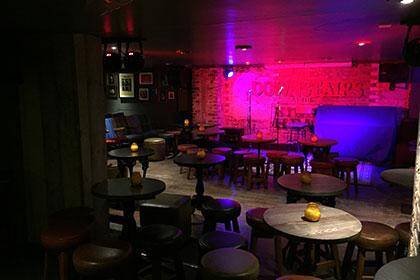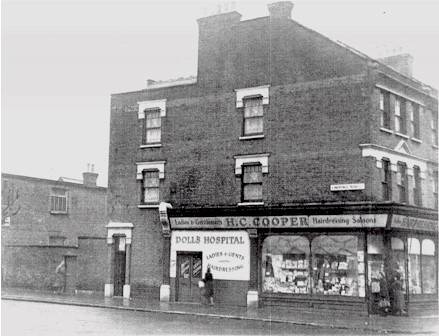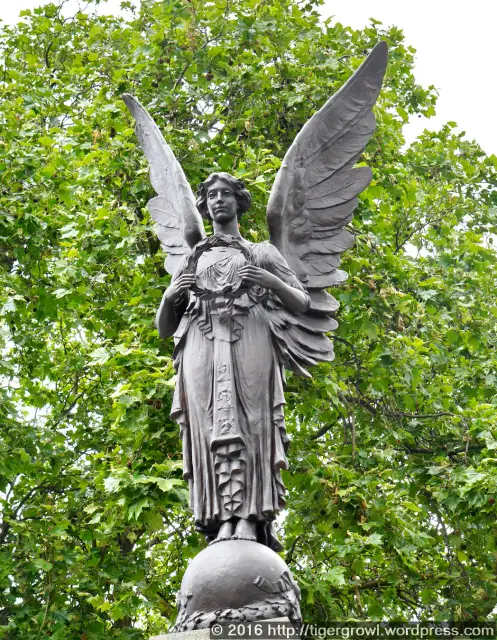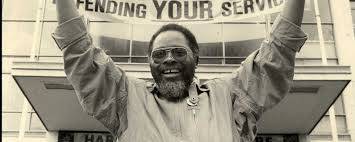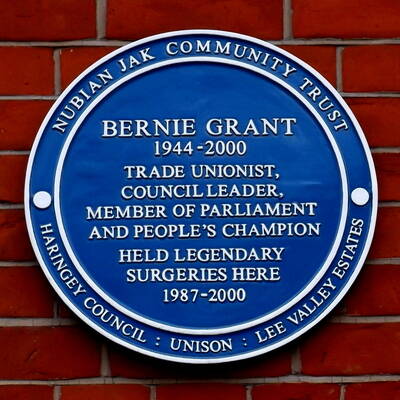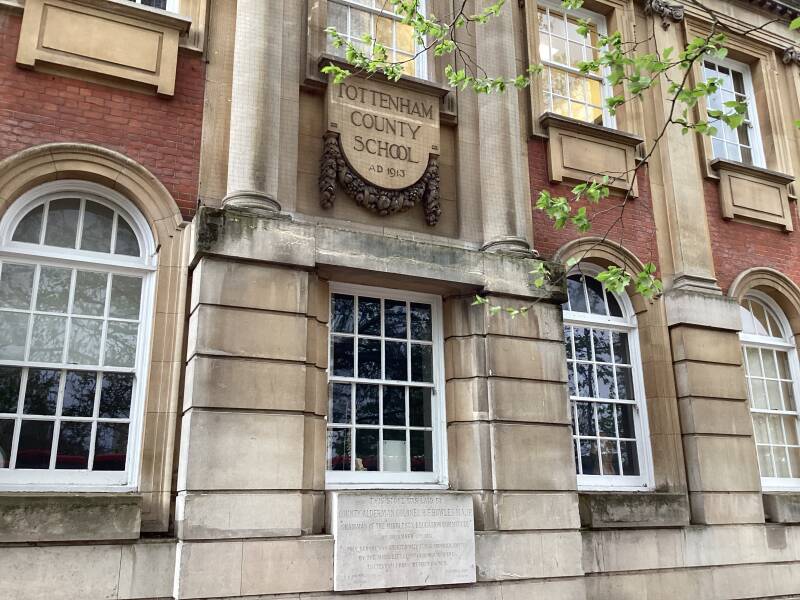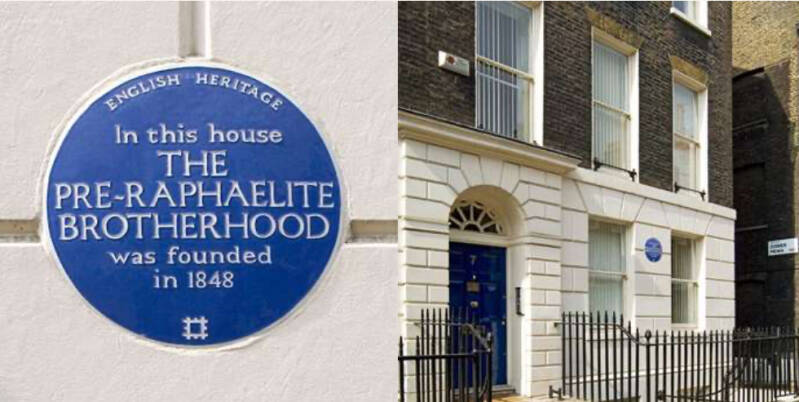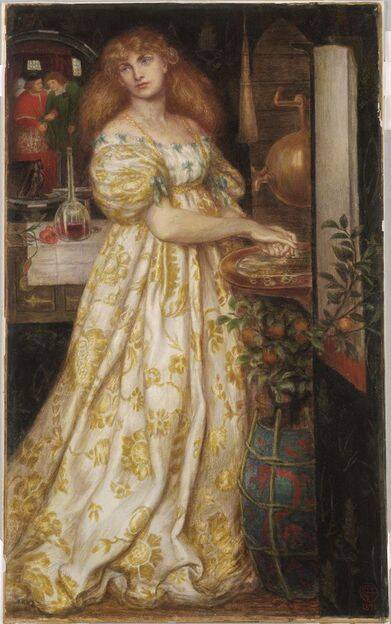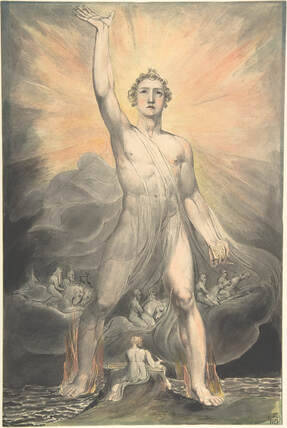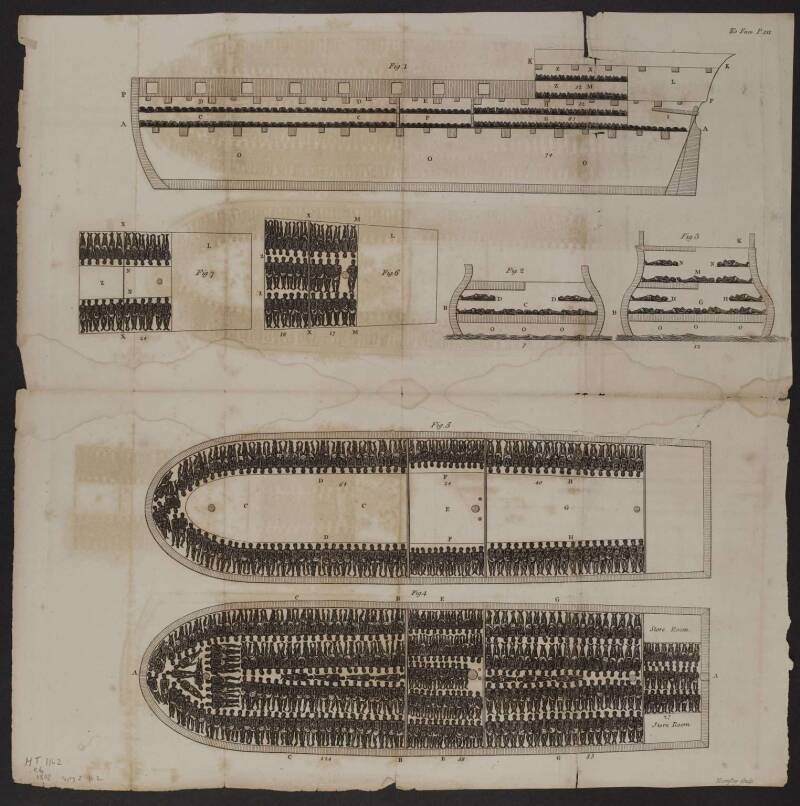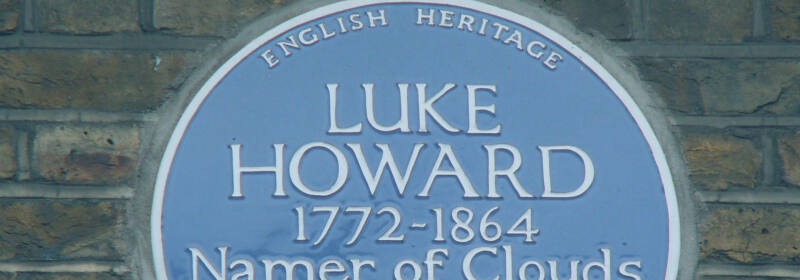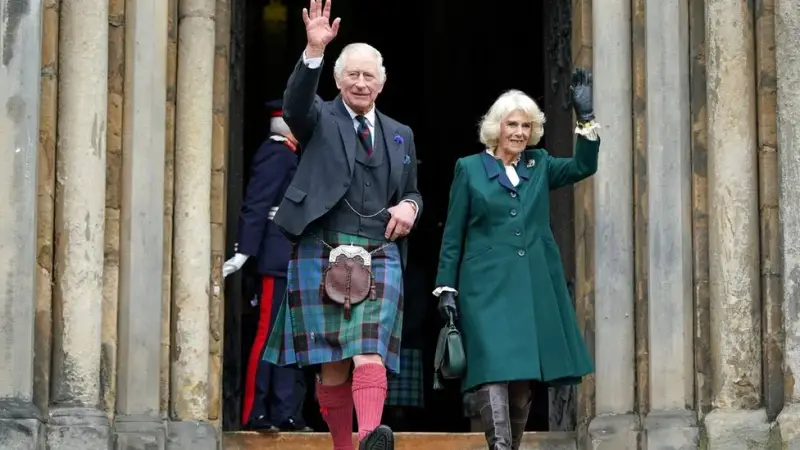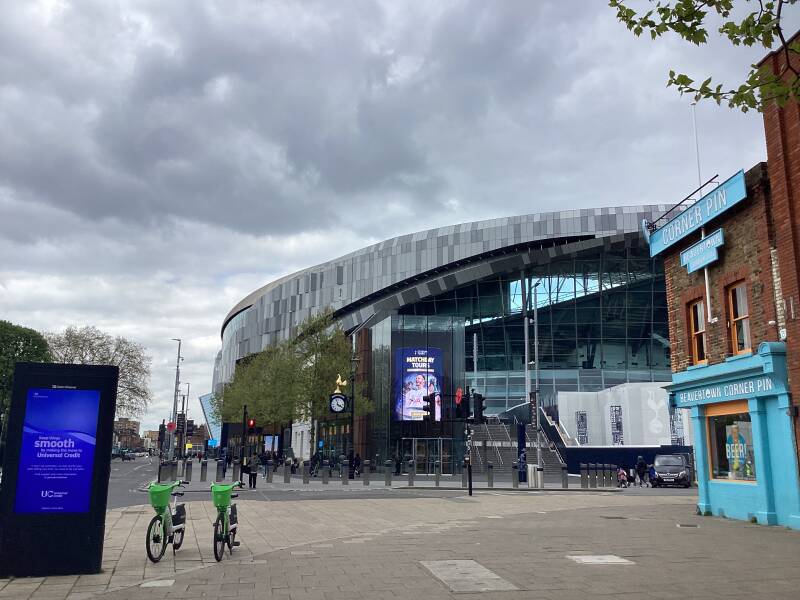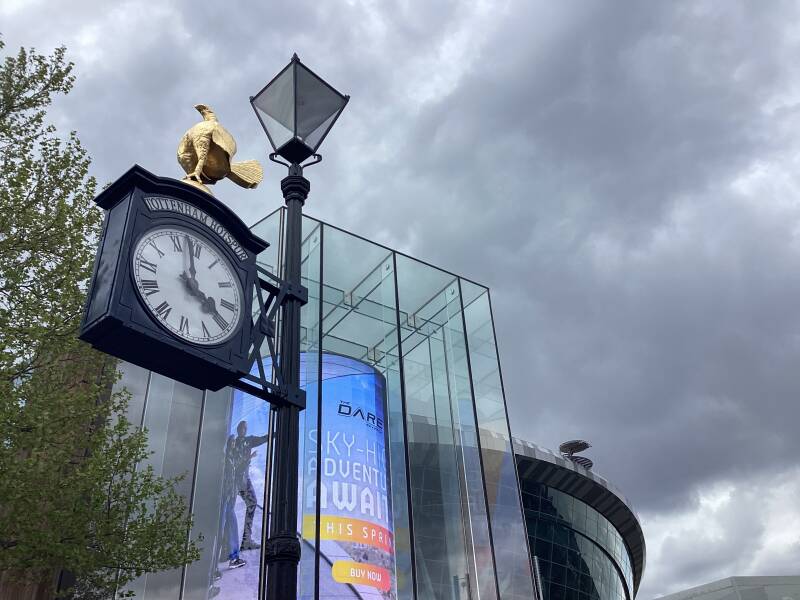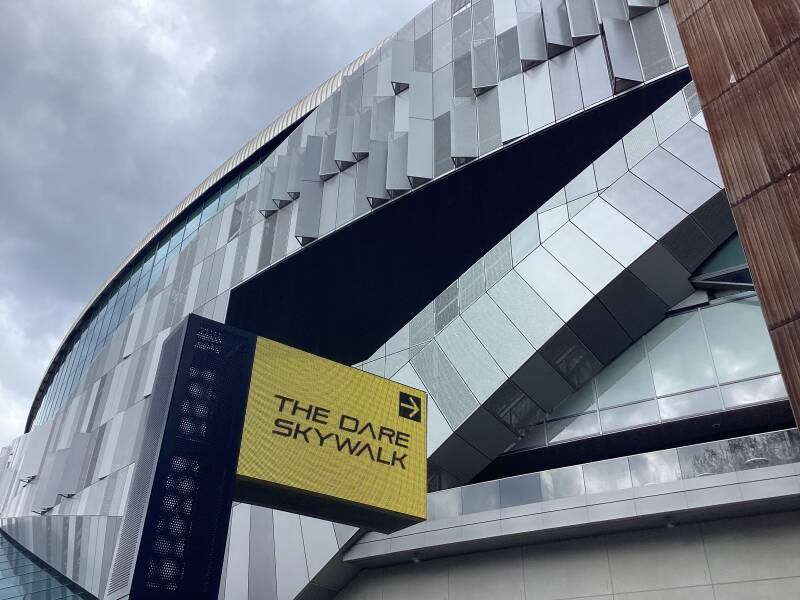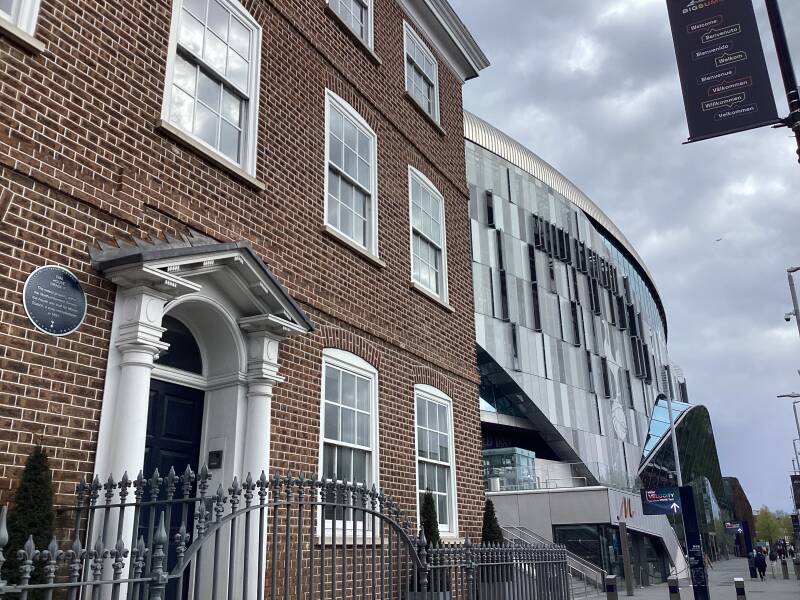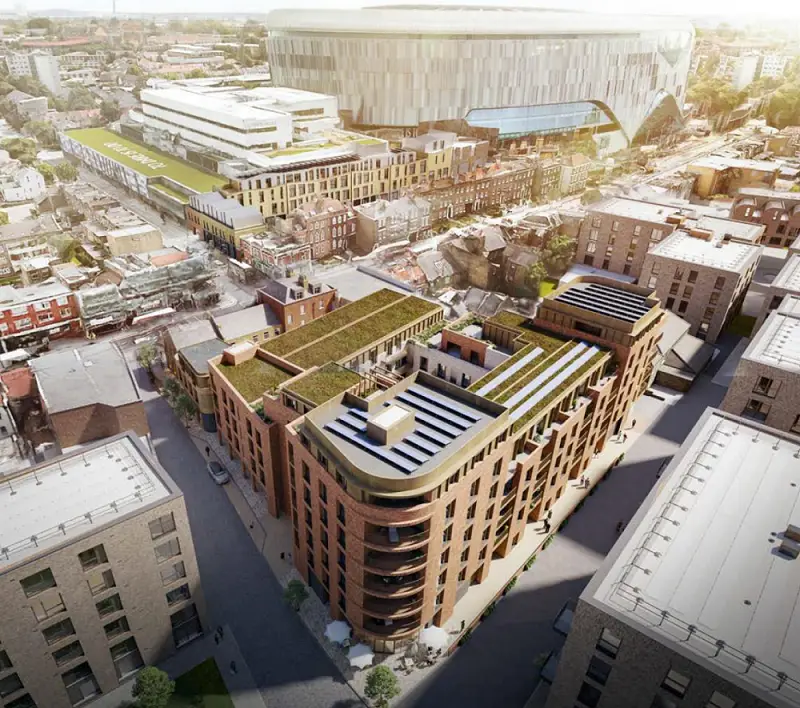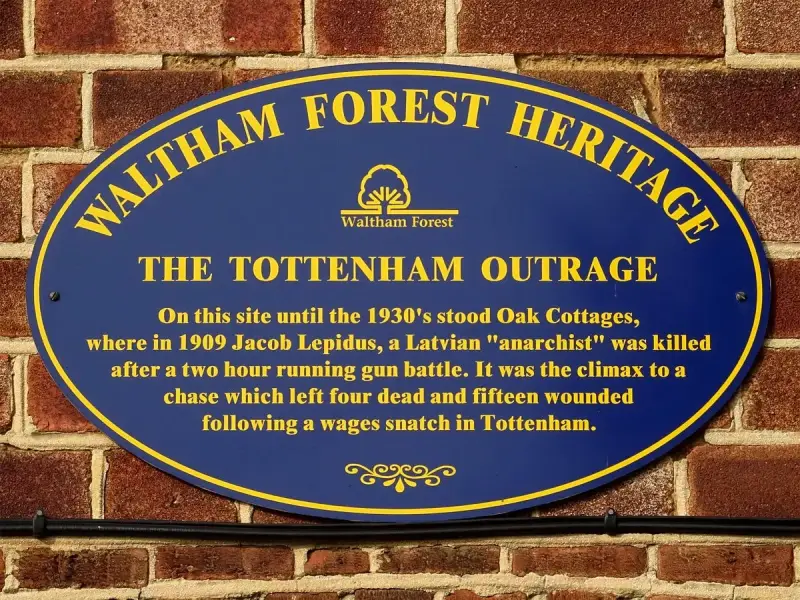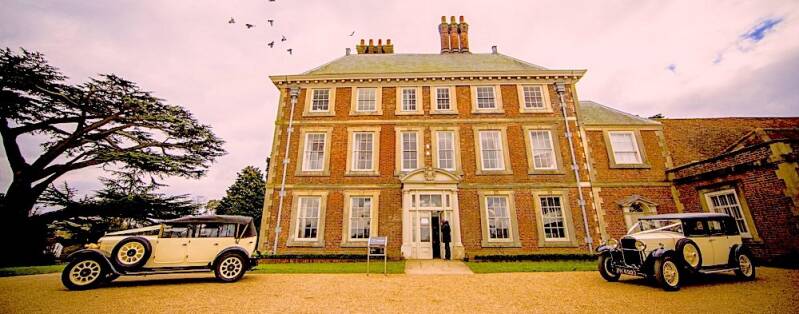Alongside the Roman road: TOTTENHAM, EDMONTON and ENFIELD TOWN

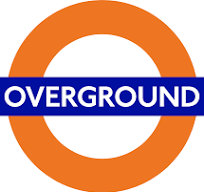



LU, LOG, NATIONAL RAILWAYS
You can reach the area directly from LIVERPOOL ST.STA., on the LOG

After STAMFORD HILL, you are entering
You are entering TOTTENHAM, part of the LONDON BOROUGH of HARINGEY
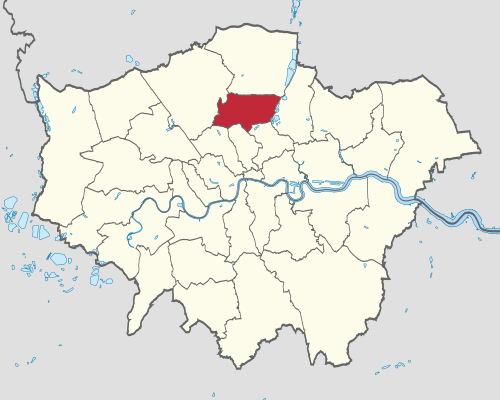
Greater London
Wards


CIVIC CENTER in WOOD GREEN
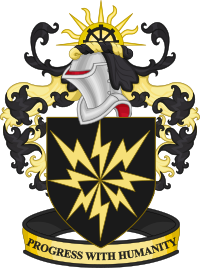
Coat of Arms
Logo

TOTTENHAM
As you can see, you are very close to the banks of the RIVER LEA and, therefore, to the WALTHAMSTOW WETLANDS.
Bus W3 takes you to NORTHUMBERLAND PARK Station, close to TOTTENHAM MARSHES


Buses to/from TOTTENHAM HIGH ROAD, specially around the SPURS STADIUM
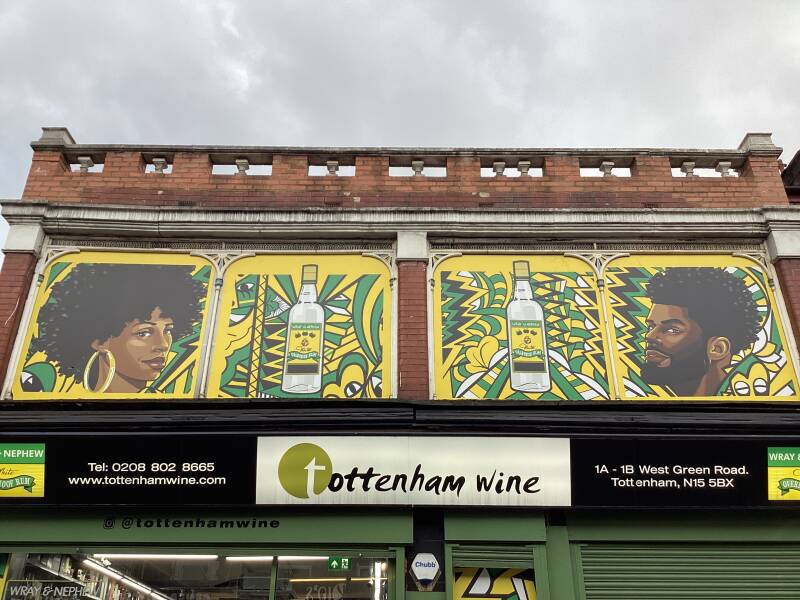
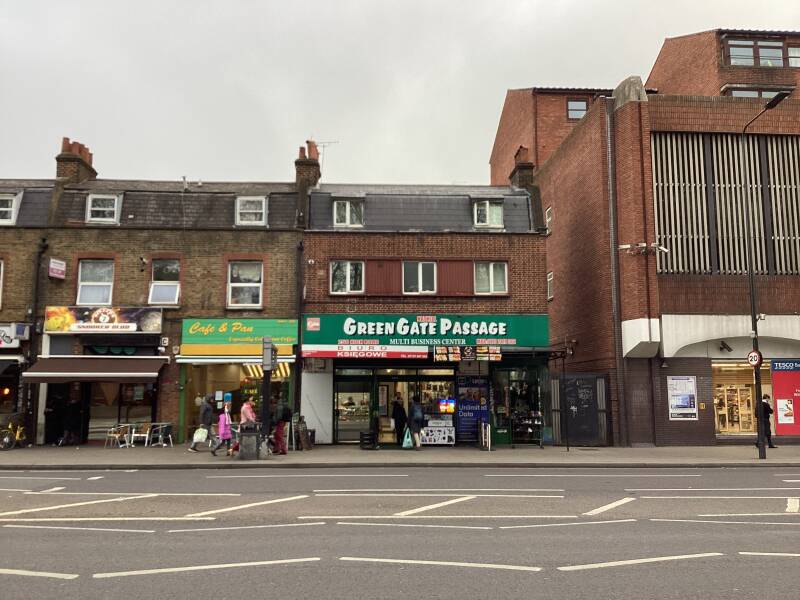


An area with a very diverse population. The Seven Sisters Ward has the largest proportion of Jewish residents among Haringey wards, at 18.1%. At Gladesmore Community School on Crowland Road, two-fifths of pupils are of black Caribbean or black African descent and a tenth are white British. However, these figures do not necessarily mirror the local demographics as a large proportion of pupils travel long distances to this increasingly popular school.

ST.IGNATIUS CATHOLIC CHURCH
Former ST.IGNATIUS COLLEGE (now in ENFIELD)
Probably, the most famous former pupil here is SIR ALFRED HITCHCOCK. Or is it GEORGE MARTIN, “the FIFTH BEATLE”?
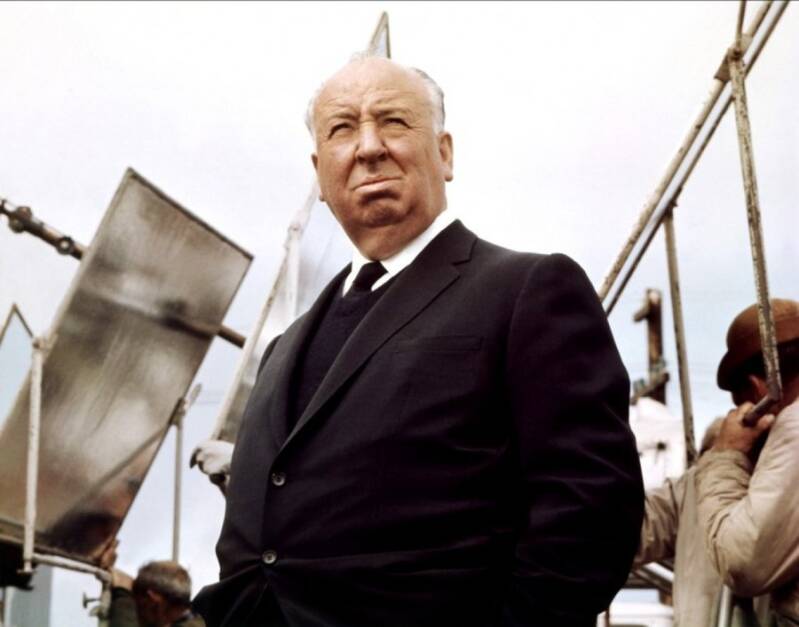

Hundreds of years ago seven elm trees were planted around a walnut tree for reasons which have been lost in time. The trees appear on the Dorset map of 1619 and some believe that the original seven trees were planted as long ago as 1350. The seven trees have been replanted a number of times, always by seven sisters but they are now in a slightly different location to the earliest plantings. In 1886, a circle of elms was planted by the seven Hibbert sisters.
In 1955 the Basten sisters planted seven Lombardy Poplars which unfortunately failed to thrive. The current seven hornbeam trees, seen in the photograph below, were planted in 1996 by the newly formed Tree Trust for Haringey with five local families each of seven sisters .
The Barkham sisters seen on the family memorial in All Hallows church have also been linked with the trees.

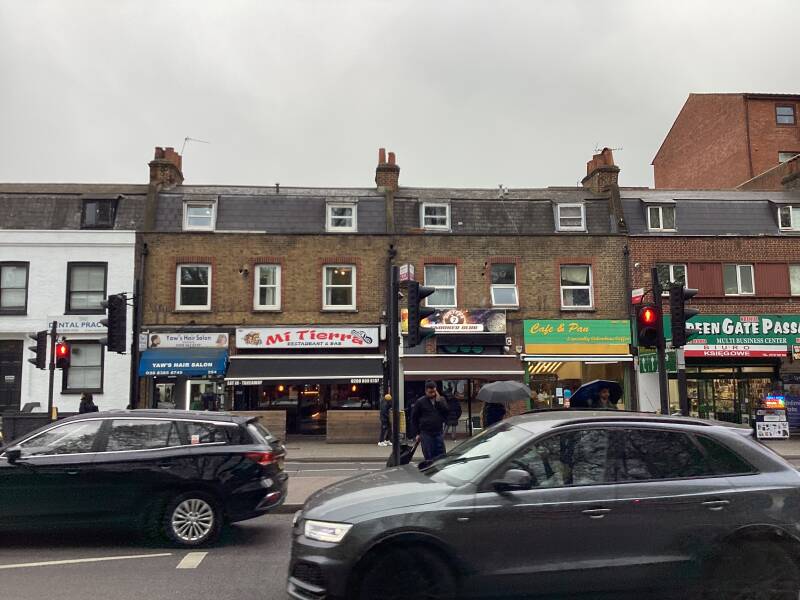

LATIN VILLAGE. Shops and eateries from South America
WEST GREEN LANE. Shops and eateries. Some historic gems and parks, if you want to explore…
Around the GREEN: TOTTENHAM TOWN CENTRE

While most of the attraction in Central Tottenham are alongside the HIGH ROAD and close to the GREEN, this TOTTENHAM PARK CAFE TRAIL must be very exciting as well (especially if you have an espresso at each stop!)

The BROADWATER FARM COUNCIL ESTATE. 6 October 1985: the RIOT.

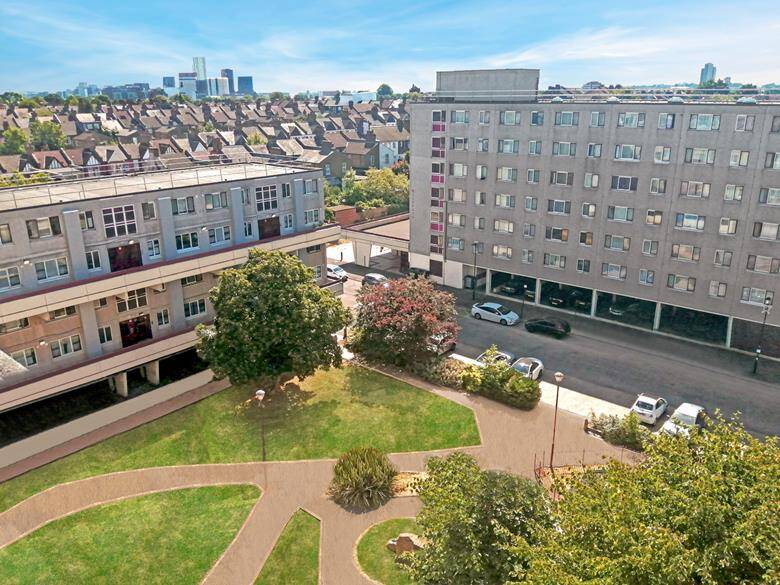
The events of the day were dominated by two deaths. The first was that of Cynthia Jarrett, an Afro-Caribbean woman who died the previous day due to heart failureduring a police search at her home. It was one of the main triggers of the riot, in a context where tensions between local black youth and the largely white Metropolitan Police were already high, due to a combination of local issues and the aftermath of the 1985 Brixton riot which had occurred the previous week, following the shooting of a black woman, Cherry Groce, during another police search.[1][2][3][4] The second death was the murder of Keith Blakelock, the third police officer since 1833 to be killed in a riot in Britain.[5][6][7]
RACE RELATIONS in London: progress has been made… But still there is space for improvement
1189
1517
1937
1958
1981
1985
1995
2011
HISTORICALLY, only a very tiny proportion of the RIOTS that have happened in London have been due to RACIALLY motivated disputes, as you can see from WIKIPEDIA.
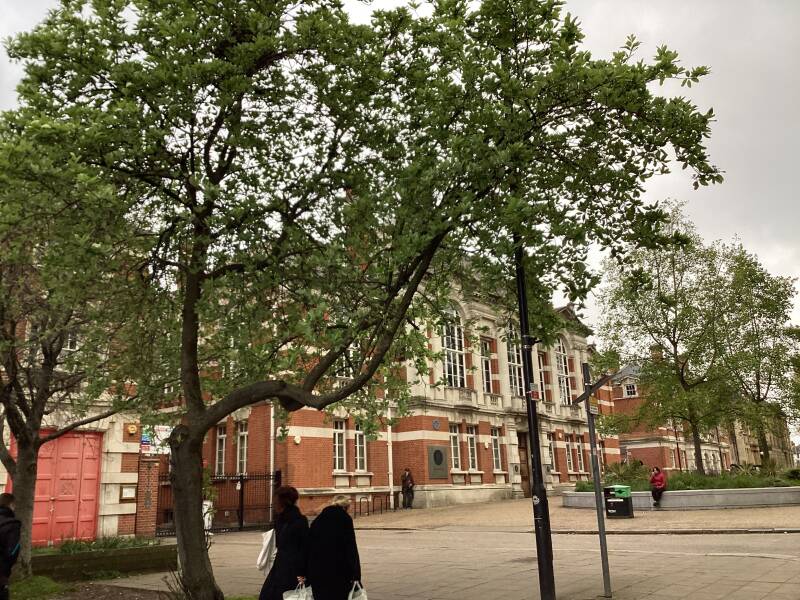
TOTTENHAM GREEN: the institutional centre
A BIG THANK YOU to SHEILA PEACOCK and to STEVE for the knowledge you will find in the following lines of this web…
Former FIRE BRIGADE STATION

And a former healthy chicken restaurant, has been lost, as well!. Fire station. Built 1905 by A S Taylor and R Jemmett. English bond red brick with Portland stone bands and dressings; hipped Welsh slate roof; brick stack with moulded stone cap. Edwardian Baroque style. 2 storeys and attic; 2-window range. Half-glazed panelled double doors set in square-headed rusticated architraves with pronounced Keystones. Segmental open pediments and pulvinated friezes over tripartite sashes with glazing bars and balustraded aprons; similar tripartite sashes to attic storey, beneath modillioned cornice; original rainwater heads with modillioned cornices and ball pendants. One of 3 municipal buildings, originally interlinked by iron gateways, built by A S Taylor and R Jemmett for Tottenham Borough Council. (The Builder, April 14 1904).
Former TOWN HALL


The foundation stone for the new facility was laid on 6 October 1904.[2] The building was designed by Arnold Taylor and Rutherford Jemmett in the Baroque style; it was officially opened by the Chairman of the Council, T H Camp, on 2 November 1905.[1] The design involved a symmetrical main frontage with seven bays facing onto Town Hall Approach Road; the central section of five bays featured a doorway with a stone surround flanked by Tuscan order pilasters on the ground floor; there were tall rounded-headed windows with Gibbs surround arches flanked with Ionic order columns in the centre and Ionic order pilasters beyond on the first floor; there was a cupola with a clock at roof level.[1] The principal room was the council chamber on the first floor.[1]
Here you have Moré Info about LONDON’S TOWN HALLS. All of them!.
WAR MEMORIAL
The old town hall and fire station are near Tottenham Green and at the southern tip of this stands the war memorial. Funded by the then Tottenham District Council at a cost of £2,000, it was erected in 1923. The monument is of course for the First World War but the inscription was later amended to include the Second World War. The Grade II listing entry records that it was ‘unveiled by HRH Princess Louise, Duchess of Argyle (assisted by an orphan boy)’ and that the occasion was attended by 40,000 people.The memorial is topped, as was common, by a winged angel holding a wreath as a symbol of peace. (Unfortunately, that peace was not to endure.) It is by Louis Frederick Roslyn (1878-1934) who is noted for his war memorials.
With thanks to SILVER TIGER
The BERNIE GRANT ARTS CENTRE
The £15 million Bernie Grant Arts Centre was designed by David Adjaye OBE and opened in 2007. It was named after Bernie Grant, one of the UK’s first black politicians and MP for Tottenham, who first proposed the idea of creating a flagship venue to promote BAME arts in 1944.
The Centre comprises three buildings:
The Hub is a Grade II listed three storey Edwardian Baroque style building, facing Town Hall Approach Road. Built in 1905 by A S Taylor and R Jemmett, it was previously the entrance to Tottenham public swimming baths. It is built of English bond red brick with Portland stone bands and dressings. There is a 2007 black clad extension to the rear. It houses the box office, administration offices, teaching and multimedia studios and a multi-purpose space which can be used as a 44 seat cinema.
Behind the Hub is the 2007 performance centre which houses a 279-seat theatre, café bar/mezzanine and rehearsal studios. The performance centre’s façade consists of glass panels with a large canopy extending forward from the building at the top and sides, clad with horizontal battens of purple-heart timber. On entering, the canopy becomes the ceiling to the front of house space, where the café bar and mezzanine are located. From the mezzanine the theatre can be accessed. The theatre has a floor space of 19.8 x 15.5 metres. The stage dimensions are approximately 8 x 15 metres. The theatre can seat up to 279 on raked seating and a gallery in an end-stage or theatre-in-the-round configuration, or 150 cabaret style. There are three dressing rooms.
The separate enterprise unit to the rear of the performance centre comprises a long series of low-rise units used by creative businesses.
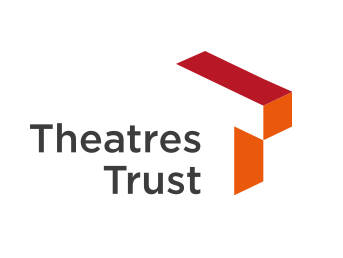
Which thanks to the THEATRES TRUST, which hosts a huge data base.
Former COUNTY SCHOOL
The MARCUS GARVEY LIBRARY
The former PUBLIC LIBRARY, now LIBRARY COURT, flats

Although this building is not as old as others, which I will be showing, I think that it has a place here as an example of late Victorian architecture built at the same time as the Municipal buildings in Town Hall Approach Road. It was built in a pleasing style, which added grandeur to the High Road. This was Tottenham’s largest library, which I remember using with fond affection. When the new library was built, the building was converted into flats in 1990 and called Library Court.
PHILIP LANE.
Site of Esq.WINDUS mansion.
TURNER & the PRE-RAPHAELITES. The collection of B.G.WINDUS, ESQ.

Windus was an eminent businessman from an established family firm of coachmakers and a director of Globe Insurance.
He was one of a new class of patrons with wealth and interest who succeeded the landed aristocracy in the patronage of the arts . He started acquiring watercolours around 1820 and by 1840 had over 200 works by JMW Turner in his collection. Passionate about the work of Turner he extended his home adding a library to accommodate his growing collection of pictures. These were framed in gold and mounted in a manner of which Turner approved

Esq.WINDUS house must have been a little to the East of the present LEISURE CENTRE
I cannot believe it!. Turner and Constable, here, in Tottenham!.
The WINDUS had an important collection of TURNER’S PAINTINGS, the display of which TURNER itself approved and assented to, and that was recreated by the painter JOHN SCARLET DAVIS, in a painting that you can admire in the BRITISH MUSEUM.

More about TURNER innLondon…
Do you know that you can visit TURNER’S HOUSE?. In TWICKENHAM?.
What about TURNER’s paintings?. In TATE BRITAIN. And hat about TURNER’s pub in WAPPING?. Not the one that claims the fame!.
PRE-RAPHAELITES in the WINDUS COLLECTION
The Pre-Raphaelite Brotherhood (PRB, later known as the Pre-Raphaelites) was a group of English painters, poets, and art critics, founded in 1848 by William Holman Hunt, John Everett Millais, Dante Gabriel Rossetti, William Michael Rossetti, James Collinson, Frederic George Stephens and Thomas Woolner who formed a seven-member "Brotherhood" partly modelled on the Nazarene movement.[1] The Brotherhood was only ever a loose association and their principles were shared by other artists of the time, including Ford Madox Brown, Arthur Hughes and Marie Spartali Stillman. Later followers of the principles of the Brotherhood included Edward Burne-Jones, William Morris and John William Waterhouse.
The group sought a return to the abundant detail, intense colours and complex compositions of Quattrocento Italian art. They rejected what they regarded as the mechanistic approach first adopted by Manneristartists who succeeded Raphael and Michelangelo. The Brotherhood believed the Classical poses and elegant compositions of Raphael in particular had been a corrupting influence on the academic teaching of art, hence the name "Pre-Raphaelite".
And works of LORD LEIGHTON, BLAKE and GERTIN, are, as well, in the WINDUS COLLECTION!.
The Windus family were well known as makers of high class carriages and harness makers and were prominent members of The Worshipful Company of Coach Makers which was one of the Livery companies of the City of London. The Company received its royal charter from Charles II in 1677. Under this charter no one could lawfully carry out the trade of coachmaker or coach harness maker within 20 miles of London without being a member of the Company.
Coachmaker and insurer

No.1 CORNHILL (CITY OF LONDON) was the prestigious address of GLOBE INSURANCE when BJ WINDUS was a Director.
After a few mergers and acquisitions that company became ROYAL SUN ALLIANCE INSURANCE GROUP

Old FIRE INSURANCE plaques or marks are very common in cities, towns and villages all over the world


LONDON ASSURANCE, which became part of SUN ALLIANCE in 1965, was involved in insuring the SLAVE TRADE. Thence the apology
Thomas Clarkson, was the author of this famous 18th c. diagram that helped publicise and popularise the cause of the ABOLITIONIST MOVEMENT
CONSTABLE in TOTTENHAM (as well!).
E of the HIGH ROAD. Site of the house of PRISCILLA WAKEFIELD

John Constable, the Romantic painter, travelled to Tottenham Green in April 1799 to visit Priscilla Wakefield who lived to the east of the High Road. She records a meeting with Constable, presumably at her home in Tottenham:
Mr Constable paid me an unexpected visit to dinner and tea.
A well-connected Quaker, famous in her life time, Priscilla Wakefield, led a life pursuing social reform. She was actively engaged in social action and the alleviation of poverty in Tottenham focussing on charities concerned with women and children founding the Lying-in Charity for Women and the School of Industry for girls. She founded a Frugality Savings Bank in Tottenham and as a result she is widely acknowledged as the founder of the first Savings Bank in England..
She was well-read with an enthusiam for education and learning as well as the economic emancipation of women, political issues of the day and the topics of science, history and geography. Her books, written in later life as a result of financial difficulties in her family, reflected her wide range of interests.
She was involved in the Quaker led campaigns for the abolition of slavery and prison reform.
Former JEWISH HOME and HOSPITAL for Incurables, now SYCAMORE GARDENS, flats
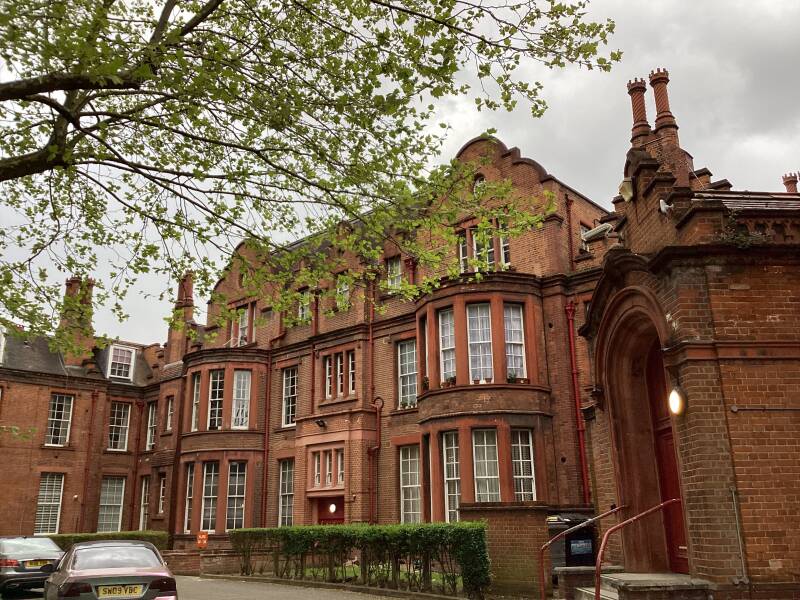

Holy Trinity Church was the second church to be built in Tottenham and it was consecrated as Holy Trinity Chapel on 26 May 1830. The Anglican church was built between 1828 – 1830 funded through public subscription and a Parliamentary grant. The church, designed by James Savage, was one of a number of ‘Commissioners’ Churches’ built as a result of the Church Building Act 1818 and related acts. It was modelled on King’s College chapel, Cambridge. Holy Trinity was assigned a district chapelry from the parish of All Hallows, Tottenham in December 1844.
The Old Well and Well House is a Grade II Listed Building on Tottenham Green, next to Holy Trinity Church.
The original well was dug in 1791:
This well was dug, and the pump erected, at the expence of the late Thomas Smith, Esq. late lord of the manor of Tottenham, in consideration of his having been allowed to enclose piece of the waste land near his then residence—the Grove House.
Vestry Book D. September, 1791
Improvements to the well and the addition of the tiled roof took place in 1859.
The Old Well supplied most of the surrounding district with water until 1883 when the supply was found to be polluted, possibly because of poor surface drainage. The well was then chained up. It has never been used since. The Old Well has remained unchanged as an interesting piece of old Tottenham.
The well was refurbished in 1953 and restored again in 2004.
Many people wrongly think that this monument was built to commemorate where the funeral cortege of Queen Eleanor in 1290 stopped on its way to London. However this site is now thought to be where the Romans placed a marker, when they were building the road. In time this marker was then replaced by a wooden structure and then eventually the stone monument that we see today. It was formally made of wood and in 1580 had four spurs to support it the pointed top was covered in lead. Apparently it had sundials on its west and south sides. In 1809 the cross was repaired and covered with cement in the form you see it today. After a period of time the monument began to lean. Later in the 1970’s when the surrounding roads were re-configured the Council took the opportunity to create an island for the Monument, it was then straightened, cleaned then lights were placed around to floodlight at night.
Банички Българска Баница
Bulgarian bakery

The HIGH CROSS PH
Nos. 399-401 GEORGIAN

The picture was taken when the houses were occupied by the BRITISH LEGION
OLD SCHOOL COURT

This fine building was built in 1848, there is a plaque on the north side which bears a carving which was originally on the Millhouse Almhouses, which was previously on this site. The Millhouse Company was later incorporated with the Drapers Almshouses and a magnificent parade of almshouses was built in Bruce Grove. See above.
The school closed down in 1980’s after been joined with the Gladesmore community school. The building has now been sensitively restored and houses many flats. The extensive school playing fields are now a Council housing estate. The wonderful ‘ Felvus’ hall a separate building on the High Road which housed the school assembly hall and science laboratories have now been sold by the Drapers Company to a church going by the splendid name of the Christ Apostolic Church.
The former TOTTENHAM PALACE OF VARIETIES
THE GARDEN HOUSE (KITABEVI), Café & Restaurant. And a bookstore





BRUCE GROVE LOG Station

If you go up to the platform, their canopies seem to have survived in their original form, including their wooden fascia boards.
Diversion alongside BRUCE GROVE (road) to BRUCE CASTLE

Bus 318
Off the HIGH ROAD, BRUCE GROVE carries the A10 towards SOUTHBURY, near ENFIELD ENFIELD. The HIGH ROAD becomes the A1010. Historically, of course, this is the important one, a ROMAN way, ERMINE STREET for the Anglo-Saxons.
No.7 BRUCE GROVE
LUKE HOWARD. Not bad for an amateur meteorologist!
Luke Howard, the Namer of Clouds, is commemorated with the only English Heritage Blue Plaque in Tottenham.
Luke Howard is also known as the Father of Urban Climate Studies for his detailed observations over many years of the weather and cloud formations in Tottenham. His scientific work changed the way we understand the climate around us.
Former BRUCE GROVE CINEMA

The cinema here first opened in July 1921 and was operated by a local independent company, Tottenham Cinema and Entertainment Co. Ltd, according to the Cinema Treasures site.
The building was reconstructed in August and September 1933. Externally it was modernised and the original domed tower feature was removed. The auditorium was Art Deco style.
In 1962 the cinema was taken over the Star Cinemas Ltd of Leeds who closed it in August 1963 and converted it into a Star Bingo Club. At some time the building was spilt with the stalls area becoming a snooker club and the former balcony extended forward to the proscenium to remain a bingo club for a few more years.
Bingo upstairs closed in May 1983 and the space was empty until 1986. It was used for two short lived ventures (an indoor cricket pavilion and a “Quazar” laser shooting gallery). Then in the early 1990s it was converted into a church, known as the Freedom’s Ark. Snooker continued in the former stalls area, together with a Caribbean restaurant.
In May 2011, the Freedom’s Ark church vacated the building and moved elsewhere in Tottenham. But there seems to be a church in here again now but I am not sure what the rest of the whole building is being used for.
Former BRUCE GROVE BALLROOM

In 1923, the owners of the Bruce Grove cinema commissioned the cinema’s architect (Charles E. Blackbourn) to design a ballroom, to add to the cinema’s amenities.
It opened in 1923 as the Bruce Grove Ballroom, with the ballroom upstairs at first floor level, and shops on the ground floor.
The Star Cinemas chain seems to have acquired this at the same time as the cinema and continued to operate the ballroom until 1974, when they converted it into a four-screen cinema, opening in July 1974 as Studios 5,6,7,8 – not sure where Studios 1, 2 3 or 4 were. These operated until December 1981. The building was then empty for a couple of years until it was returned to a single space and reopened as the Regency Banqueting Suite in 1984, which is what it is today.
The DRAPERS ALMSHOUSES

See later for BRUCE CASTLE
The route carries on. from BRUCE GROVE LOG Station to EDMONTON


CHARLTON HOUSE

LANCASTER HOUSE
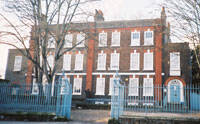
Former BLUE SCHOOL

This is the Blue School, this school is thought to have got its name from the distinctive colour of the uniform worn by the girls who attended the school.This school was originally built by public subscription; this was the earliest charity school in Tottenham founded in 1735. This building was replaced in 1833 by the present building, which was enlarged in 1876, by unsympathetic first floor extension at the back. The school closed in the 1930’s. The back extension then became a dress factory and the front was converted, in my estimation, badly, into a row of tawdry shops. Thankfully these shops are closed, the site boarded prior to restoration.This is the Blue School, this school is thought to have got its name from the distinctive colour of the uniform worn by the girls who attended the school.
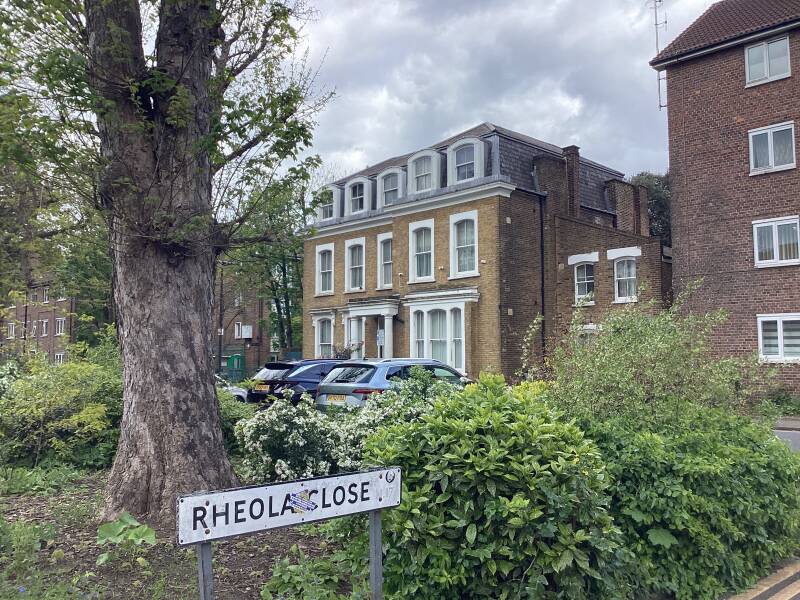
RHEOLA CLOSE


This impressive building was put up in stages around the turn of the Century and completed in 1914.
This was an impressive terrace, which housed showrooms and offices, where residents could purchase their coal supplies, which would then be delivered to their door. Bills could be paid here for both gas and electricity. Also you could purchase new gas stove etc.
In the 1970’s the building was bought by Haringey Council and houses offices. The building is now being further altered. The showrooms, which have impressive windows and entrances, are to become a Centre where residents can call in to register their problems with any of the Council Services.
Former LONDON CO-OPERATIVE SOCIETY, 1930

This building was completely gutted by fire during the so called ENGLISH RIOTS in 2011.
Diversion to WOOD GREEN alongside LORDSHIP LANE
(As for the diversion EASTWARDS, to the TOTTENHAM MARSHES alongside LANSDOWNE ROAD: see PART IV—EXPLORE MORE OF EAST LONDON )

243
123
318
Buses 243, 123 and 318 stop by the Museum in either Lordship Lane, Bruce Grove or The Roundway. The bus announcement or bus indicator says to alight for ‘Bruce Castle Park and Museum’.
The Scottish DE BRUCE CLAN owned the land


PROSPECT PLACE

1812


Former HOME & COLONIAL TRAINING SCHOOL, and then Gas company HQ
WOOD GREEN


Not to miss, when in WOOD GREEN:
—ALEXANDRA PALACE & PARK. Entertainment venue. The BBC first studios. Great views
—MUSWELL HILL & CROUCH END. Well to do Victorian/Edwardian districts
—HARRINGAY & GREEN LANES. THE LADDER, a curious street layout (follow the NEW RIVER). TURKISH restaurants. See chapter in this guide
If you avoid the diversion, your route follows the HIGH ROAD
Remember, you were in TOTTENHAM… In fact, you are in the NORTHUMBERLAND PARK ward
CRITERION PARADE & BUILDINGS. Shops and food eateries.

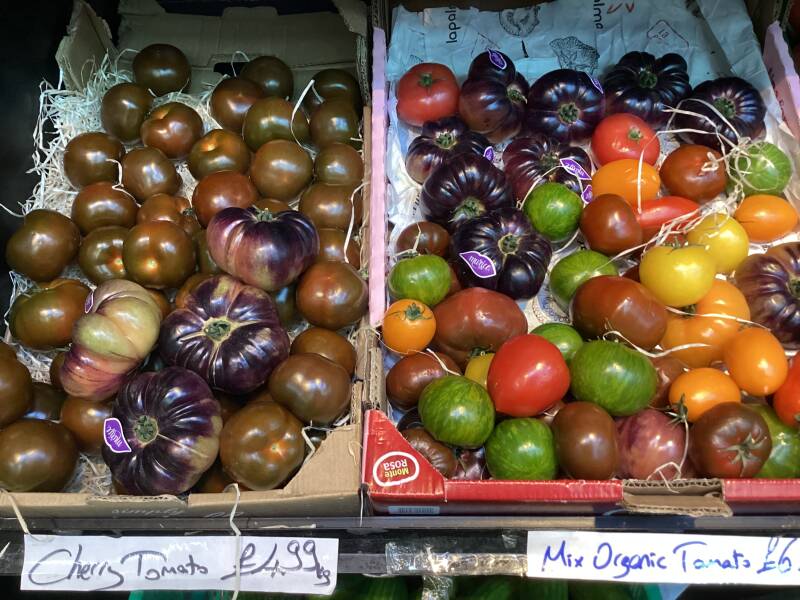





Former WHITBREAD BELL BREWERY
Gripper Brothers Bell Brewery was established in Tottenham in 1760 and was acquired by Whitbread and Company in 1896. Whitbread turned it into a bottling depot later the same year although some of the older brewery buildings on the east side of the High Road were still in use in 1924.
By the way, talking about breweries… you will be shocked, later on!.
Polish shop
Early C19 pair, each 3 storeys and basement, 3 windows. Stock brick, with lost cornice and renewed stuccoed parapet. Ground floor stuccoed. Gauged flat brick arches to sash windows with glazing bars and original shutters. Basement plinth.
Double doors of 4 panels under patterned radial fanlights. Doric porches with fluted columns.
MOORE HOUSE

This house forms part of a terrace and is now flats and offices. The front of the building still has the impressive rainwater head, dated 1817. At the end of this terrace is an imposing house owned by Windsor and Co Solicitors, they have been in residence for more than 100 years. Inside, this building still contains many of its original features.
BAPTIST Church



Joseph Fletcher built this church in 1825; it has an imposing frontage of 4 Doric Columns, which are apparently made out of single blocks of stone with another block for the capital. The church was restored in the 1990’s and is now floodlight at nighttime. A visit to the church to see the unusual style of the interior is a must. With its upstairs gallery running round the inside on three sides of the church makes me wonder if Mr Fletcher had visited other religious establishments before he started to build The inside of this church resembles many of the synagogues that I have visited.
LEDLEY KING MURAL

LEDLEY KING, SPURS, and only SPURS, player
MOSELLE HOUSE

As far as it has been ascertained, this house was built in 1714. At one time it was a school kept by the Misses Lindsey as an establishment for ‘young ladies’.
This house lies well back from the road with a shared carriage drive. The reason for this house and the house next door laying so far back from the road is because the MOSELLE STREAM runs in front of the house, this stream is now CULVERTED and out of sight.
The house is well proportioned and has a proud plaque stating its name for all to see. Unlike many other houses in the High Road the entrance is on the side in Church Road. Internally the house retains most of its decorative plaster ceiling features, plus the windows still have internal wooden shutters.
Fancy following the RIVER MOSELLE course?
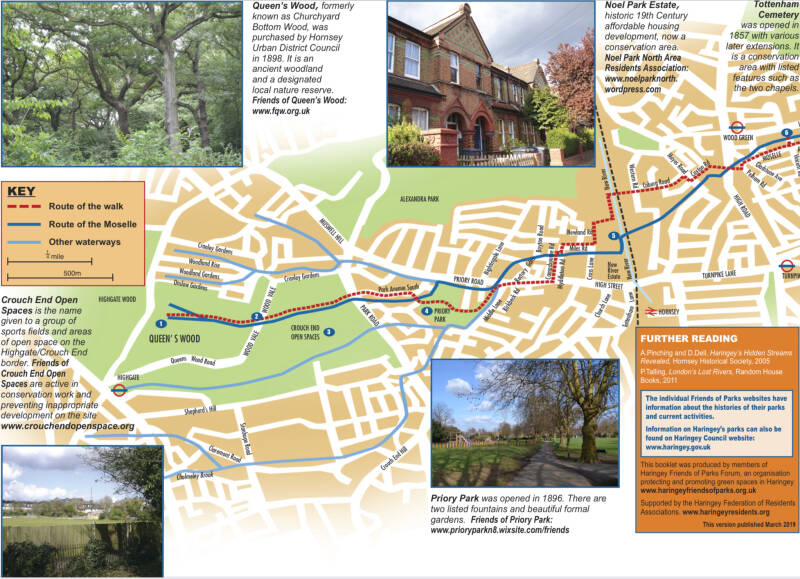

FormerTottenham Territorial Army Drill Hall. Now, TOTTENHAM COMMUNITY SPORTS CENTRE
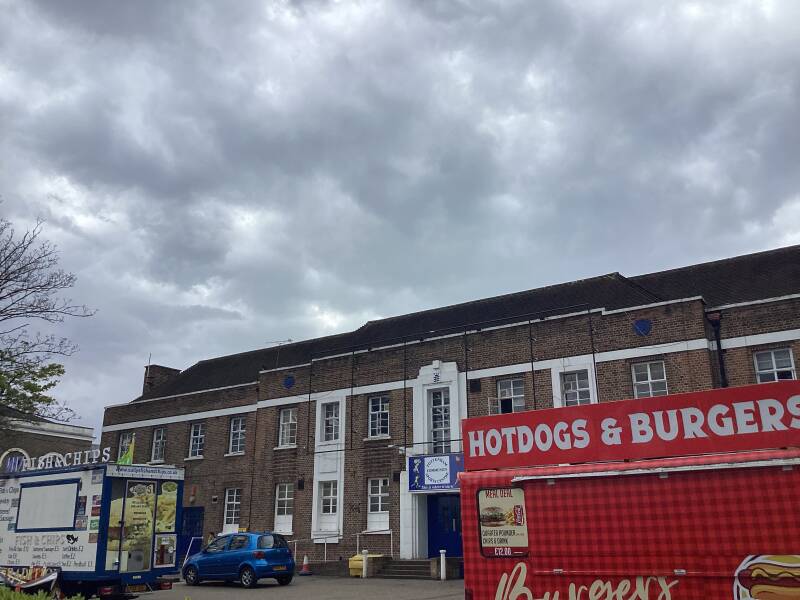

You are entering SPURS territory…
(See the HERITAGE plaques on the buildings and on the pavement)
THFC Heritage trail
WARMINGTON HOUSE
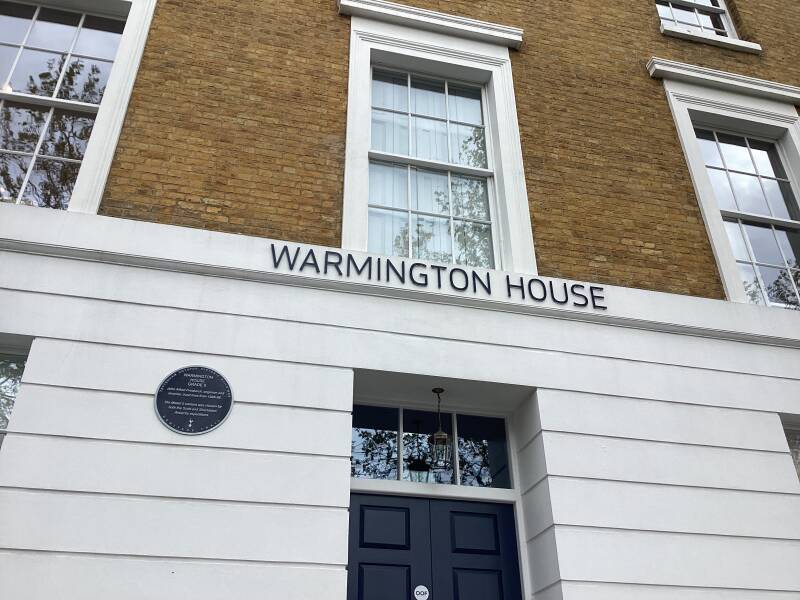
This house was built in 1828; it is shadowed by the building next door, which was built immediately onto it, jutting out approximately 30feet, and spoiled the look of the house. Tottenham Hotspurs now owns this house. They have re-developed this part of the High Road, restoring this house to its previous prominence.
This house in my opinion should have Blue Plaque on it, as this is the house that J.A.PRESTWICH was born in. The building that was the FACTORY where Mr Prestwich produced his famous motor cycles is still in existence nearby in Tarriff Road.
Site of the TOTTENHAM & EDMONTON DISPENSARY

This building was erected to serve the poor with medical advice and medicine. A committee was set up and the local Vicar chaired the meetings. At one time Dr Laseron was involved, about that time he was actively raising funds to build a hospital at Tottenham Green, which became known as the Prince of Wales.
The building is now locally listed because of its history also due to the fact that it has a fine stone ground floor entrance enriched by a Doric door case which echo the Tottenham Baptist church opposite.
Site of the RED HOUSE, and Former BEN NICHOLSON PH
The club’s BOARD ROOM was here and Manager NICHOLSON had his office here, as well


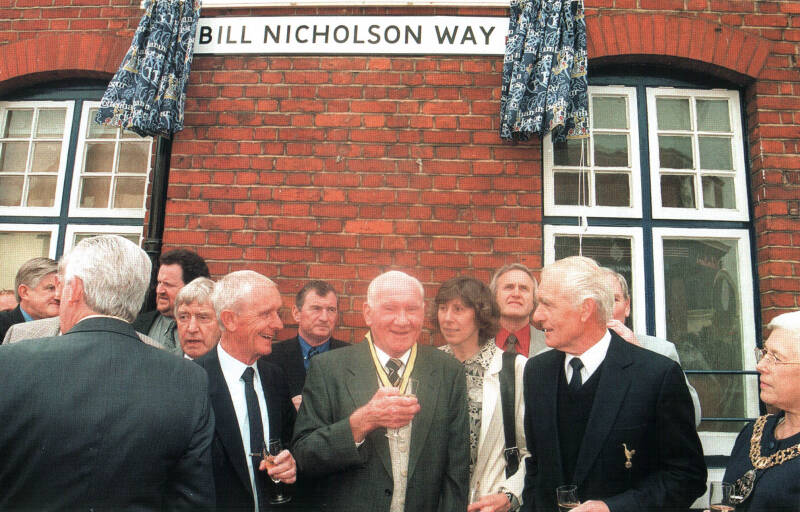
A pub, in a football stadium?. Bah!… TOTTENHAM has a brewery!
Was TOTTENHAM HOTSPUR FC originally a COCKFIGHTING CLUB?. Nope!
The name Hotspur club was chosen in honour of Sir Henry Percy (better known as Harry Hotspur, the rebel of Shakespeare's Henry IV, part 1), whose Northumberland family once owned land in the area, including Northumberland Park in Tottenham, where the club is located

SPURS and the North London JEWISH COMUNITY
Site of BILLY MUDGE’s house
William ‘Billy’ Mudge lived at no.778 High Road on the site of the current Tottenham Hotspur Stadium. He was one of Tottenham’s first motorists.
After Tottenham Hotspur lifted the FA Cup in 1901, Billy Mudge drove a four-horse carriage to St Pancras station to bring home the victorious team. He was met by a huge crowd of delighted supporters and later said ‘They wouldn’t let me drive the Spurs team home. The supporters took away the horse and pushed the carriage and team back to Tottenham’
DIAL HOUSE


The Haringey Council restored this house, unfortunately in the restoration they removed all the outstanding fireplaces and plasterwork, this house now houses students.
The house gets its name from the large sundial bearing the date 1691 on its south side gable. The house was built in 1691 by Moses Trulock, a city soap manufacturer. The Trulock family owned the building right up until the 1830s.
Can you see WHITE HART LANE?

Yes, WHITE HART LANE, popularly “THE LANE”, was the name of the old stadium.
The home of Tottenham Hotspur Football Club from 1899 to 2017. Its capacity varied over the years; when changed to all-seater it had a capacity of 36,284.[3] The stadium was fully demolished after the end of the 2016–17 season.[4
In its early days it was normally referred to as the Hotspur's or Spurs' Ground by the club or the High Road Ground by the public, in time it became popularly known as White Hart Lane, which is in fact the name of the street on the western side of High Road, away from the ground. It is however unclear how it became so-named; some thought that it acquired the name because spectators would first meet up at the White Hart Lane railway station, another suggestion is that it referred to the lane leading to the stadium entrance beside the White Hart pub later officially named Bill Nicholson Way.
No 7. BOBBY BUCKLE’S HOUSE
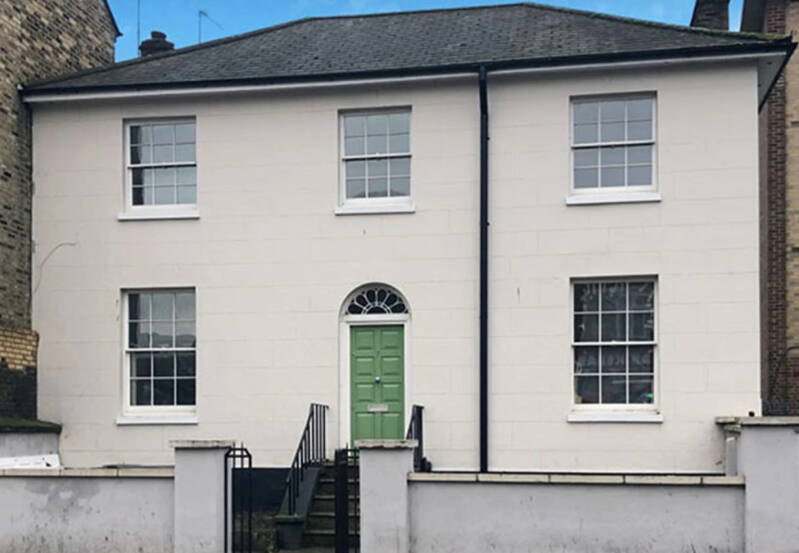
0ff WHITE HART LANE. No. 71 CREIGHTON RD. BEN NICHOLSON’S HOUSE

PERCY HOUSE
Percy House is synonymous with the history of Tottenham Hotspur. The building was commissioned by Sir Hugh Smithson, Duke of Northumberland, the inheritor of the fortune and lands of the Percy family of Northumberland in the early 1740s. His ancestor, Sir Henry Percy, commonly known as ‘Harry Hotspur’ inspired Tottenham Hotspur’s name and its famous cockerel emblem
The building was fully renovated with the support of the Heritage Lottery Fund and sits at the heart of the re-development of North Tottenham, providing a permanent home to the Tottenham Hotspur Foundation - the Club’s official charitable body, that has been creating life-changing opportunities for local people
In its current form, Percy House acts as a major community, enterprise, and skills hub for the community, providing a range of employment advice services to deliver jobs locally. Over 4,000 jobs for local people have been delivered across a range of sectors as a direct result of the stadium development
800 HIGH ROAD
Through the gated arch at 800 High Road, you will find a series of information boards illustrating the historic, social, and architectural significance of Northumberland Terrace. These boards provide an introduction to the people of Tottenham High Road, the residents of Northumberland Terrace, and the history of creativity across the community.
This forms part of what will soon become Paxton17, which will embrace the historic connection of Tottenham to art, photography, and music, bringing new life and creative flair to N17. The vision is for a vibrant commercial quarter where an infrastructure of restored and new buildings facilities the development of a creative eco-system
NORTHUMBERLAND TERRACE
Site of the BLACK HOUSES

This is a fine terrace of houses, some of which have been unsympathetically restored inside, although from the outside they still look imposing. This terrace was built on land where previously stood some medieval mansions. One of which was called Percy House.
The current Percy house has magnificent gate piers and railings, which are entirely baroque, set of by a wonderful gate. The gate piers have been thought to be part of the original Black House where it is alleged Henry VIII some times stayed.
In 1749 Sir Hugh Smithson became the Duke of Northumberland, that is where the name of the terrace. comes from. In 1752, Robert Plimpton built the terrace. No 796 is the grandest with a fine doorway and portico.
The two buildings in existence today once sat in the garden of the Black Houses - owned by the Henningham Family in the 16th century.
George Henningham was a member of the Royal Court and a cousin of Anne Boleyn. It is said that an inscription in a bedroom recorded that King Henry VIII once stayed here as a guest of Henningham
No. 800 had the largest plot of the entire Northumberland Terrace.
No. 802 has had a history of famous inhabitants. JOHN ARTHUR PERCIVAL BARNES, a physician and surgeon, lived here in 1900 as did ANDRE and his sone LEONARD, also prominent physicians, and surgeons.
Both building facades have been restored by Tottenham Hotspur with funding from the London Borough of Haringey.
Interestingly, no images exist of the Black Houses.
HOLLY HOUSE & PROUDHOE HOUSE


The finest ensemble of Georgian properties within the North Tottenham Conservation Area and date back to the 18thcentury
The distinct architectural character of the buildings has been retained in their restoration and Prudhoe and Holly House represent the jewel in the crown of a row of prestigious and historic properties. A reconstructed drawing of the frontage forms the cover of Dan Cruikshank and Peter Wyld’s book ‘London: the art of the Georgian building’
Sir Hugh Smithson, Duke of Northumberland, was responsible for the construction of both houses as a symmetrical pair between circa 1715-1725. Both buildings were partially destroyed by a high explosive incendiary devise during the Blitz in London in 1940.
PRUDHOE is a Grade II* listed building named after Admiral Algernon Percy, 4thDuke of Northumberland. He was rewarded with the title ‘Baron Prudhoe’ for his distinguished service as a naval commander.
The front façades of both properties have been restored - Prudhoe House won a prestigious Georgian Group award in 2003, and Holly House won a similar accolade in 2008
The buildings will be restored and will become home to the Sarabande Foundation, set up by the late designer Alexander McQueen, to support creative and visionary talent. It is now home to 15 artists and designers and helps to inspire a new generation of artists and cultural talent across the local area. The Sarabande Foundation are already on site
THE PRINTWORKS
The Printworks site has a long history and notable connection with the printing press. The printers Cusha and Son were based at no.823 High Road from the 1890s. Edwin Herbert Cusha worked as a publisher’s assistant and reporter in the 1860s before later becoming the editor of the Tottenham and Edmonton Weekly Herald and registrar of all births, deaths, and marriages for Tottenham. Subsequently the site became the Head Offices of the Tottenham and Edmonton Weekly Herald
Tottenham Hotspur has secured planning and listed building consent to restore and redevelop this historic site to include new homes and plans for a distinctive and unique neighbourhood cinema
TOTTENHAM’s (former) LITTLE RUSSIA
Mainly comprising Pretoria Road, Durban Road, and Lorenco Road (west of the railway line between Silver Street and White Hart Lane), this area had become known as "Little Russia" in the early 20th century due to the influx of immigrants from the TZARIST EMPIRE. Immigration peaked when a large number of “Russians” settled there after fleeing the 1917 Russian Revolution.
It developed into one of the toughest areas of North London and the local constabulary usually only policed the area in pairs.
In fact they were JEWISH LATVIAN ANARCHIST and the violence was politically motivated. The TOTTENHAM OUTRAGE and the SIDNEY STREET SIEGE are linked by the same thread: EAST END JEWISH ANARCHISM!.
The area was mostly redeveloped in the 1970s. And I thank again WIKIPEDIA!.





The main road is called here FORE STREET.
PYMMES PARK: the Elizabethan CECILS residence!


With thanks to LONDONIST for this funny piece of information
Cash machine, ATM, Cashpoint, Hole-in-the-wall… anyway, this is the WORLD’S FIRST!




To the N of ENFIELD TOWN

MYDDELTON HOUSE GARDENS. THE BOWLES TEA ROOM







Not that one!





